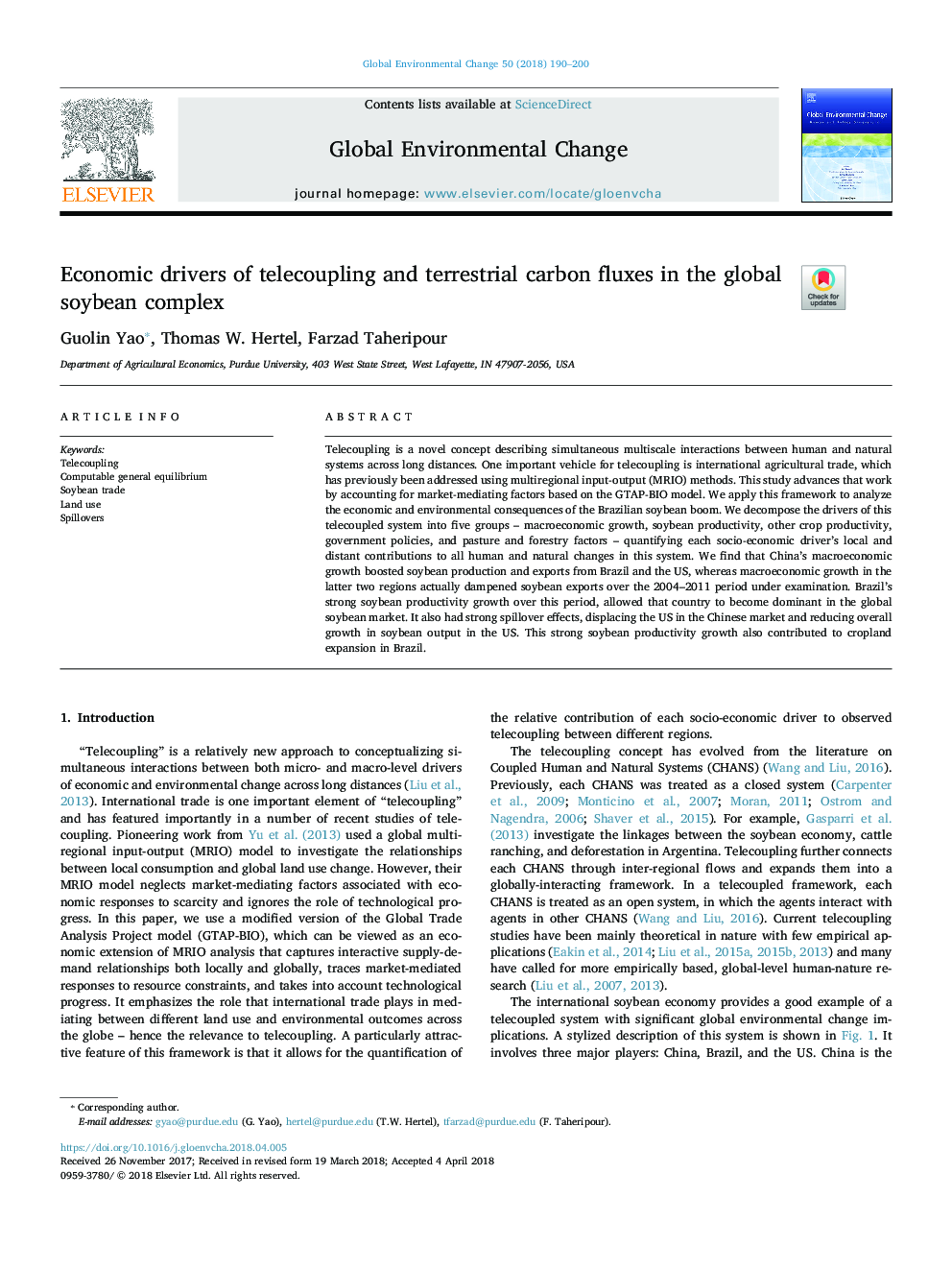| کد مقاله | کد نشریه | سال انتشار | مقاله انگلیسی | نسخه تمام متن |
|---|---|---|---|---|
| 7468887 | 1485108 | 2018 | 11 صفحه PDF | دانلود رایگان |
عنوان انگلیسی مقاله ISI
Economic drivers of telecoupling and terrestrial carbon fluxes in the global soybean complex
ترجمه فارسی عنوان
رانندگان اقتصادی تله کوبا و فلوئوردهای کربنی زمینی در مجموعه جهانی سویا
دانلود مقاله + سفارش ترجمه
دانلود مقاله ISI انگلیسی
رایگان برای ایرانیان
کلمات کلیدی
موضوعات مرتبط
علوم زیستی و بیوفناوری
علوم محیط زیست
علوم زیست محیطی (عمومی)
چکیده انگلیسی
Telecoupling is a novel concept describing simultaneous multiscale interactions between human and natural systems across long distances. One important vehicle for telecoupling is international agricultural trade, which has previously been addressed using multiregional input-output (MRIO) methods. This study advances that work by accounting for market-mediating factors based on the GTAP-BIO model. We apply this framework to analyze the economic and environmental consequences of the Brazilian soybean boom. We decompose the drivers of this telecoupled system into five groups - macroeconomic growth, soybean productivity, other crop productivity, government policies, and pasture and forestry factors - quantifying each socio-economic driver's local and distant contributions to all human and natural changes in this system. We find that China's macroeconomic growth boosted soybean production and exports from Brazil and the US, whereas macroeconomic growth in the latter two regions actually dampened soybean exports over the 2004-2011 period under examination. Brazil's strong soybean productivity growth over this period, allowed that country to become dominant in the global soybean market. It also had strong spillover effects, displacing the US in the Chinese market and reducing overall growth in soybean output in the US. This strong soybean productivity growth also contributed to cropland expansion in Brazil.
ناشر
Database: Elsevier - ScienceDirect (ساینس دایرکت)
Journal: Global Environmental Change - Volume 50, May 2018, Pages 190-200
Journal: Global Environmental Change - Volume 50, May 2018, Pages 190-200
نویسندگان
Guolin Yao, Thomas W. Hertel, Farzad Taheripour,
